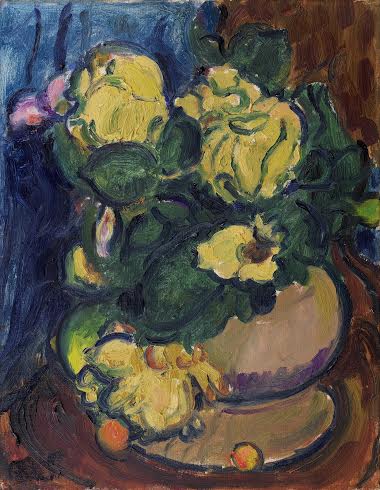There is a growing interest in the work of Matthew Smith after a period of relative neglect. At Tate Britain he has been included in a room given over to the painterly approach, now considered fundamental to British art. No longer is Smith simply consigned to the English Fauve pigeonhole, but is seen as a wider part of a tradition of artists intimately concerned with the materiality of paint. It’s a traditional that goes back to Titian, Turner and Constable, and one which was prevalent in 20th century British art. It can be traced through the cunning pictorial inventions of Sickert and the doughty expressiveness of Bomberg, and is recognised to have absorbed something from that great master of the heavy swinging brushstroke and fierce colour, Chaim Soutine (1894-1943). The Tate display juxtaposed Smith with Bomberg as well as Bacon (quoting Bacon’s famous high assessment of Smith), and traced the line on into the work of Frank Auerbach and Leon Kossoff.
The type of paint application which defines artists in this tradition oscillates between a fluid and a more encrusted mode, with Smith established in all his impassioned fluidity. Although well known, Bacon’s remarks are worth quoting once again as they penetrate to the very heart of the matter. Bacon wrote of Smith: ‘He seems to me to be one of the very few English painters since Constable and Turner to be concerned with painting – that is, with attempting to make idea and technique inseparable. Painting in this sense tends towards a complete interlocking of image and paint, so that the image is the paint, and vice versa. Here the brush stroke creates the form and does not merely fill it in. Consequently every movement of the brush on the canvas alters the shape and implications of the image. ‘
Andrew Lambirth, Matthew Smith, Landscapes, Crane Kalman, 2010
